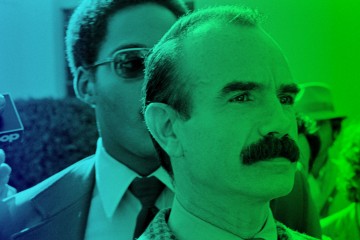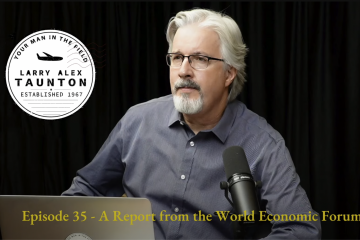The Around the World in 80 Days expedition rolls on. South Korea was a great experience. It is an impressive and largely forgotten example of American nation building. Perhaps even more impressive than Japan because of the extraordinary growth of Christianity in South Korea. It was also meaningful for me to see where my father had fought.
But now I am in Vietnam.
In addition to his four years in Korea, my father also did two tours here. I have now done two tours in Vietnam as well. Of course, mine were under somewhat different circumstances. His tours involved extensive time in the jungle carrying an M16 and trying to avoid being killed by “Charlie.” My tour of the jungle was like a trip to an amusement park, albeit a somewhat bizarre amusement park.
Memories of ‘Nam haunted a generation of Americans. Those of us who came after them watched Oliver Stone’s “Platoon” and Francis Ford Coppola’s “Apocalypse Now,” nihilistic films that said more about a particular type of American’s worldview than it did about the war. On the other end of the spectrum there were Chuck Norris’s Colonel Braddock in “Missing in Action” and Sylvester Stallone’s Rambo in “First Blood Part II,” characters who returned to Vietnam, kicked some communist butt, and restored a bit of dignity to a wounded American ego.
This was the war we lost and the Vietnamese love reminding you of it.
Hopping a speed boat in central Saigon (also known as Ho Chi Minh City), we headed upriver an hour to The Cu Chi Tunnels. Whenever possible, a boat is the best way to travel in Vietnam. Outside of the upscale parts of the urban areas, the roads are often in poor condition and dusty. By contrast, the speed boats and water taxis move about efficiently. Sitting in the back near the big Mercury outboard motor of this 25-footer, we took in the sights of the city, the riverside mansions and bamboo stilt houses, along with the great natural beauty and the trash that peppered our wake. With the boat captain skillfully navigating the water hyacinth at high speed to the accompaniment of Steve Earle’s Copperhead Road, all that was missing was John Kerry to regale us with suspect Vietnam War swift boat memories.
A short video of my speed boat trip down the Saigon River
The Cu Chi Tunnels were one of the many bases of operation for the Viet Cong during “The American War,” as they call it. Stretching for miles like capillaries, they are now a national park celebrating Vietnam’s great victory over the “American capitalists.” Arriving at the park’s boat dock, you are greeted with a meal and the beverages westerners always seem to need. Prior to going into the tunnels, the government requires visitors to watch a 20-minute film. In the U.S., such a film would be about safety and expected behavior on the tour and, of course, advertisements to capture your tourist dollars. Not here. This was a propaganda film produced in 1967.
The film was memorable. (I include here a link to the Vietnamese language version with subtitles.) In one scene we are introduced to a beautiful Vietnamese woman named Vo Thi Mo. Although we are supposed to think of her as a typical peasant, her appearance suggests she might have played a starring role in “Crazy Rich Asians.” But don’t be fooled by the exterior of this femme fatale. Her first name—or that which the propagandists gave her—means war. The female narrator, sounding like Hanoi Hannah, says softly:
“It’s Vo Thi Mo, the beautiful and thin girl from Nhuan Duc. She prefers singing to firing, but her determination is huge.”
It continues:
“She follows male soldiers everywhere…. She follows [the] enemy’s each and every step. She earned the medal of American soldier killer.”
It seems a safe assumption that this was not a woman with a profile on Christian Mingle. I lost count of the number of times the narrator said “kill Americans” or its variants. No doubt the gift shop at the end of our tour would be full of snow globes, t-shirts, and hats reading, “Kill Americans.” This phrase was the Cu Chi Tunnel equivalent of “See Rock City.” I was the only American in the audience and now I knew
why. I decided they needed better marketing consultants. I mean, if they don’t want to tone down their overt hatred for Americans for the sake of attracting more of them, they should at least consider advertising in the Muslim world. Many of them would love this
place.
I lost count of the number of times the narrator said “kill Americans” or its variants.
Departing the amphitheater, the willing were permitted to enter the tunnels unguided. I squeezed through a short passage feeling like the proverbial camel trying to thread the needle. The tunnels are hot and narrow and go on indefinitely. Following this bit of spelunking, a tour guide led us along a veritable path of horrors where she gleefully pointed out concealed traps of every kind—poisoned bamboo spears that swing from trees and aim for the face, neck, and torso; pits containing iron spikes; apparently harmless objects that are rigged with explosives; landmines, and so on until we arrived at a mannequin symbolizing women like Vo Thi Mo. The mannequin wore lipstick, rouge, and what appeared to be a Burberry scarf. I had no idea the Viet Cong had been at the forefront of fashion. Our guide, jovial and in a voice more appropriate to a tour of a chocolate factory, pointed back to the path we had just walked and said:
“Booby-trap.”
Then, with the perfect timing of a practiced comedienne, she pointed at the mannequin:
“Honey-trap!”


Not for the faint of heart, the tunnels are hot, narrow, and poorly illuminated.
The tour group laughed nervously, fearing, perhaps, a trapdoor and impalement or
bamboo to the face if they didn’t. Regardless, the not-so-funny point was not without merit. Many a good American soldier, taught from youth to be deferential to the
opposite sex, found those ingrained behaviors weaponized and used against them by women who lured them to their destruction. Indeed, throughout history, men who have shrewdly avoided death on the battlefield have fallen by the score to this subtler kind of warfare.
“Honey traps aren’t just on the battlefield!” one fellow said, eliciting a few chuckles. I had cause to reflect on that one.

The swinging floor booby-trap. Note the spikes.

This is what the guide called the “honey trap”
The tour now over, we stood under a canopy where it was announced that visitors could buy gifts, have a soft drink or beer, relax—or rent an AK-47.
This is what I love about the Third World. No frivolous lawsuits, no Alexander Shunnarah, and not calibrated to meet the anxious expectations of soccer moms. Yup, you could rent the assault rifle of choice for communist and Islamic terrorists around the world and shoot at paper targets in the silhouette of a man who is, presumably, representative of an American soldier. I briefly wondered if they had one of Ho Chi Minh or, lacking that, another communist, Nancy Pelosi.
But my enthusiasm was not shared by everyone. Angst had suddenly possessed our group of mostly Australians and Brits, and a handwringing discussion on the ethics of using such weapons, even for fun, ensued.
I left.
“Hey, Larry, where are you going?” someone from Wales shouted after me.
“I’m going to go and empty a couple of magazines into those targets.”
I needed to let off a bit of steam, and can you think of a better way to do it?
This place was like Six Flags—but with AK-47s.
What’s next? Cornhole with hand grenades?
Using an AK-47 in Vietnam
For this week’s song, I link to the best-selling single of 1968, the height of the Vietnam War. This song sold more than 6 million copies. I think it will surprise you. It surprised me.


